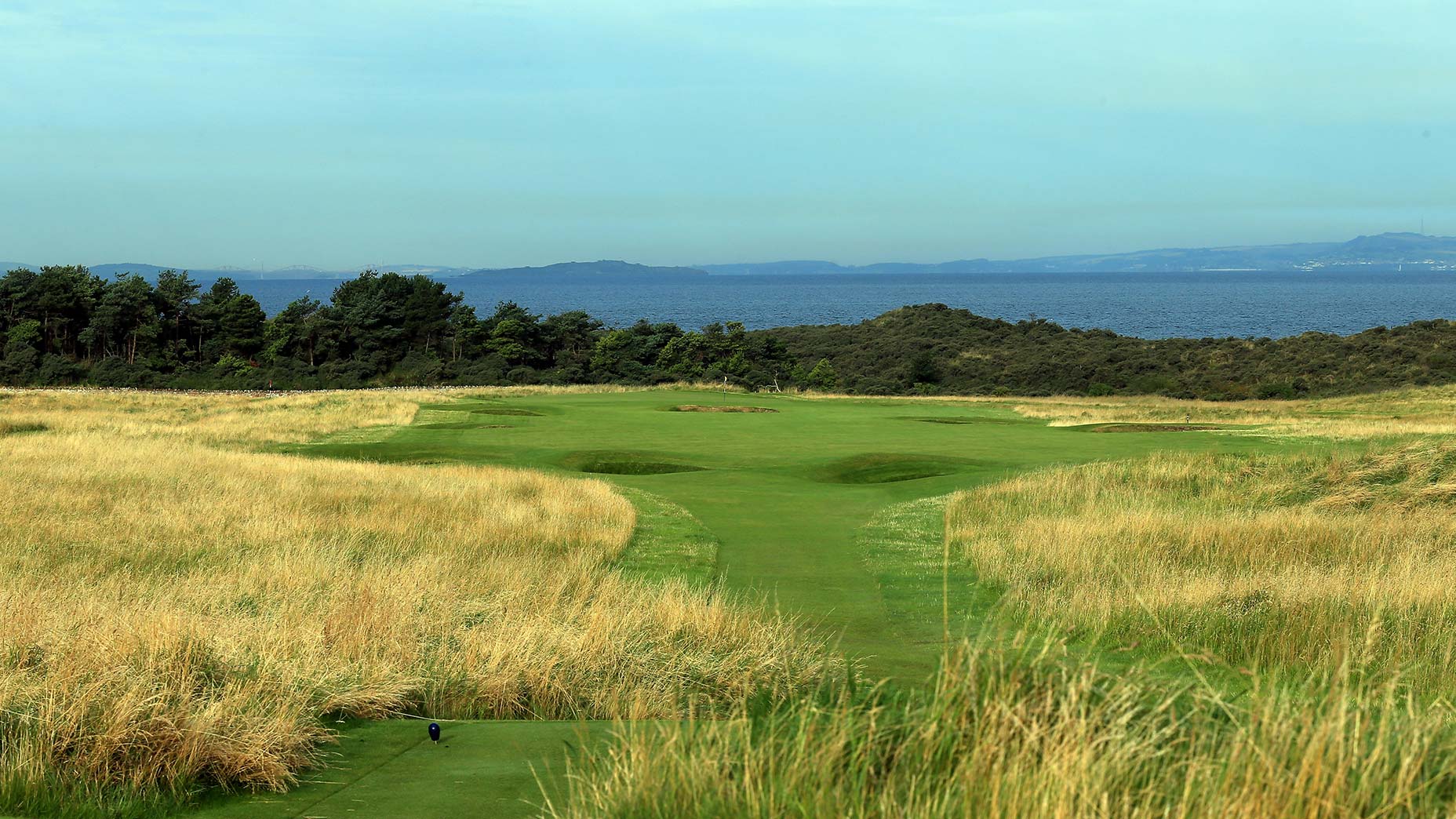A “narrows” template hole is not just a hole with a narrow fairway. In fact, the first use of the template at National Golf Links of America has plenty of width (the fairway is about 35 yards wide).
Many golf course enthusiasts argue that the more width a hole has, the more opportunity for strategy. While logic would suggest a “narrows” hole would go against that credo, most of the holes still have ample width to allow their strategy to shine through.
The hole’s namesake comes from two bunkers that pinch in from each side of the fairway, giving the hole a narrowing effect. There’s lots of variation with these bunkers, but the original comes from the par-4 15th at Muirfield in Scotland, and its “twin bunkers.” Not every hole that can be categorized as narrows plays quite like No. 15 at Muirfield or has two bunkers with the same design. There is perhaps more variance in this template than any other as it is also quite rare.
The second important part of a narrows hole is deception short of the green. On the original at Muirfield and on Macdonald’s first attempt at NGLA, this is in the form of a centerline bunker 30-40 yards short of the green. From the view of the approach shot, it appears as though an aerial approach is the only option, as the bunker looks like it sits just in front of the green. But in reality, there’s plenty of room past the bunker to land a running shot short of the green. This deception isn’t always done with a bunker, but it is the most common way.
So, where is the original?
Well, that’s sort of a difficult question. In a 1906 edition of Outing Magazine, C.B. Macdonald described a narrows hole as, “composite first shot of the 14th at North Berwick, with green and bunker guards like the 15th at Muirfield.”
In truth, most of the template seems to come from the 15th at Muirfield. Their website’s description of the hole tells you all you need to know about the strategy. “This is another hole where you want to hit a driver, but the smarter play is probably a long iron short of the bunkers which protect either side.”
If you go for it with driver, there is a slope that will give you extra distance. A little further down are the twin bunkers. Then, there’s a centerline bunker 30 yards out from the green. In his design, Macdonald took the elements of Muirfield’s hole and reimagined them to be an even stouter strategic test.
What strategy should I use?
Because there are so few narrows holes, there isn’t a ‘one size fits all’ strategy here. That being said, narrows holes typically demand a decision between taking on the bunkers by playing driver and laying back for a longer approach. Your decision should be made based on your driving accuracy. But remember, laying back might not be as bad a penalty as you first imagined.
Most narrows holes feature a green that slopes from back to front, so going long leaves you dead, while staying short makes for a much easier chance at getting up and down.
Where are some other narrows holes?
No. 15, National Golf Links of America
The staple of this template is, to no surprise, another C.B. Macdonald hole at National Golf Links of America. Macdonald built his version of the Narrows template as a 419-yard par-4 at the beginning of the finishing stretch. Macdonald shrunk the hole from the original so that players would have to contend with the twin bunkers on their tee shot. The hole is heavily bunkered on both sides in the fairway and around the green. The hole also features the centerline bunker 50-60 yards out from the green which slopes from back to front. Missing long here is a player’s worst nightmare with bunkers behind the hole and the green sloping away from you. Don’t let the centerline bunker deceive you into hitting too much club.
No. 6, Metairie Country Club
An original Seth Raynor design in Louisiana, No. 6 on Metairie is another example of a narrows. Playing 370 yards at its longest, this hole also has bunkers on either side of the fairway, making driver a risky play. There are bunkers guarding each side of the green and some water comes into play as well. There is no centerline bunker short of the green, but the strategy of the hole is similar to all the others.
No. 2, Forsgate Country Club
One final rendition of a narrows hole is the second at the Banks Course at Forsgate Country Club. Designed by Charles Banks, this hole plays 420 yards from the back tees, mostly straight away. There is a fairway bunker on each side, slightly offset from one another. But instead of the centerline bunker, there is a big valley in the fairway before it rises back up to the green. The green is guarded on both sides by large bunkers, penalizing any miss left or right. While straying from the original, this hole makes great use of the template ideas.
Editor’s note: The photo in this story has been updated to show Muirfield in Scotland, not Muirfield Village in Ohio.
